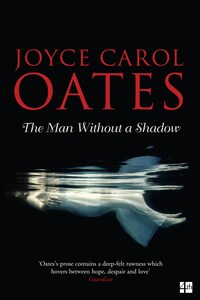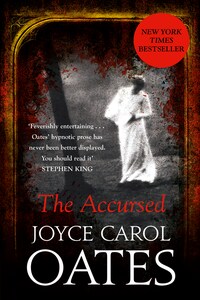4th Estate
An imprint of HarperCollinsPublishers
1 London Bridge Street
London SE1 9GF
www.4thestate.co.uk
This eBook first published in Great Britain by 4th Estate in 2016
First published in the United States by Ecco in 2016
Copyright © 2016 by The Ontario Review, Inc.
Cover photographs © Stephen Carroll / Trevillion Images
Joyce Carol Oates asserts the moral right to be identified as the author of this work
A catalogue record for this book is available from the British Library
All rights reserved under International and Pan-American Copyright Conventions. By payment of the required fees, you have been granted the non-exclusive, non-transferable right to access and read the text of this e-book on-screen. No part of this text may be reproduced, transmitted, down-loaded, decompiled, reverse engineered, or stored in or introduced into any information storage and retrieval system, in any form or by any means, whether electronic or mechanical, now known or hereinafter invented, without the express written permission of HarperCollins.
Source ISBN: 9780008165383
Ebook Edition © January 2016 ISBN: 9780008165406
Version: 2016-12-21
NOTES ON AMNESIA: PROJECT “E.H.” (1965–1996)
She meets him, she falls in love. He forgets her.
She meets him, she falls in love. He forgets her.
She meets him, she falls in love. He forgets her.
At last she says good-bye to him, thirty-one years after they’ve first met. On his deathbed, he has forgotten her.
HE IS STANDING on a plank bridge in a low-lying marshy place with his feet just slightly apart and firmly on his heels to brace himself against a sudden gust of wind.
He is standing on a plank bridge in this place that is new to him and wondrous in beauty. He knows he must brace himself, he grips the railing with both hands, tight.
In this place new to him and wondrous in beauty yet he is fearful of turning to see, in the shallow stream flowing beneath the bridge, behind his back, the drowned girl.
… naked, about eleven years old, a child. Eyes open and sightless, shimmering in water. Rippling-water, that makes it seem that the girl’s face is shuddering. Her slender white body, long white tremulous legs and bare feet. Splotches of sunshine, “water-skaters” magnified in shadow on the girl’s face.
SHE WILL CONFIDE in no one: “On his deathbed, he didn’t recognize me.”
She will confide in no one: “On his deathbed, he didn’t recognize me but he spoke eagerly to me as he’d always done, as if I were the one bringing him hope—‘Hel-lo?’”
BRAVELY AND VERY publicly she will acknowledge—He is my life. Without E.H., my life would have been to no purpose.
All that I have achieved as a scientist, the reason you have summoned me here to honor me this evening, is a consequence of E.H. in my life.
I am speaking the frankest truth as a scientist and as a woman.
She speaks passionately, yet haltingly. She seems to be catching at her breath, no longer reading from her prepared speech but staring out into the audience with moist eyes—blinded by lights, puzzled and blinking, she can’t see individual faces and so might imagine his face among them.
In his name, I accept this great honor. In memory of Elihu Hoopes.
At last to the vast relief of the audience the speech given by this year’s recipient of the Lifetime Achievement Award of the American Psychological Association has ended. Applause is quick and scattered through the large amphitheater like small flags flapping in a weak, wayward wind. And then, as the recipient turns from the podium, uncertain, confused—in belated sympathy the applause gathers and builds into a wave, very loud, thunderous.
She is startled. Almost for a moment she is frightened.
Are they mocking her? Do they—know?
Stepping blindly away from the podium she stumbles. She has left behind the heavy and unwieldy eighteen-inch cut-crystal trophy in the shape of a pyramid, engraved with her name. Quickly a young person comes to take the trophy for her, and to steady her.
“Professor Sharpe! Watch that step.”
“Hel-lo!”
Here is the first surprise: Elihu Hoopes greets Margot Sharpe with such eager warmth, it’s as if he has known her for years. As if there is a profound emotional attachment between them.
The second surprise: Elihu Hoopes himself, who is nothing like Margot Sharpe has expected.
It is 9:07 A.M., October 17, 1965. The single defining moment of Margot Sharpe’s life as it will be the single defining moment of Margot Sharpe’s career.
Purely coincidentally it is the eve of Margot Sharpe’s twenty-fourth birthday—(about which no one here in Darven Park, Pennsylvania, knows, for Margot has uprooted her midwestern life and cast it among strangers)—when she is introduced by Professor Milton Ferris to the amnesiac patient Elihu Hoopes as a student in Professor Ferris’s neuropsychology laboratory at the university. Margot is the youngest and most recent addition to the renowned “memory” laboratory; she has been accepted by Ferris as a first-year graduate student, out of numerous applicants, and she is dry-mouthed with anticipation. For weeks, she has been reading material pertinent to









